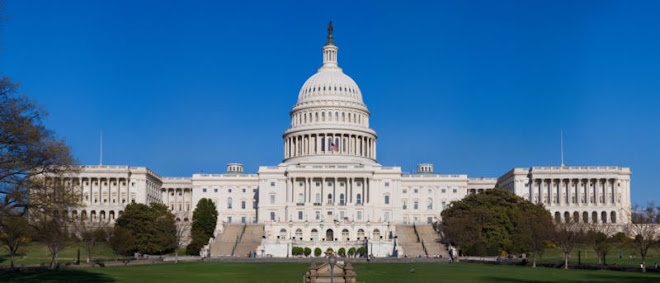from The CATO Institute:
A Look at the Senate Democratic Proposal for Immigrants and Crime: Perception vs. Reality
By Stuart Anderson, an adjunct scholar at the Cato Institute and executive director, National Foundation for American Policy.
Recent events in Arizona show how quickly concerns about possible crimes committed by immigrants can dominate the immigration policy debate. The murder of an Arizona rancher in March became the catalyst for the state legislature passing a controversial bill to grant police officers wider latitude to check the immigration status of individuals they encounter. But do the facts show immigrants are more likely to commit crimes than natives?
The situation in Arizona is a classic case of perception becoming more important than statistics. “There is nothing more powerful than a story about a gruesome murder or assault that leads in the local news and drives public opinion that it is not safe anywhere,” according to Scott Decker, an Arizona State University criminologist.1
In a recent article, Daniel Griswold, director of the Center for Trade Policies Studies at the Cato Institute, writes, “According to the most recent figures from the U.S. Department of Justice, the violent crime rate in Arizona in 2008 was the lowest it has been since 1971; the property crime rate fell to its lowest point since 1966. In the past decade, as illegal immigrants were drawn in to the area in record numbers by the housing boom, the rate of violent crimes in Phoenix and the entire state fell by more than 20 percent, a steeper drop than in the overall U.S. crime rate.”2
Griswold notes that in a story in the Arizona Republic, the assistant police chief in Nogales, Roy Bermudez, “shakes his head and smiles when he hears politicians and pundits declaring that Mexican cartel violence is overrunning his Arizona border town. 'We have not, thank God, witnessed any spillover violence from Mexico,' Chief Bermudez says emphatically. 'You can look at the crime stats. I think Nogales, Arizona, is one of the safest places to live in all of America.'”
The Immigrant Crime Rate: Lower Than Natives?
Data show immigrants are much less likely to commit crimes than the native-born, a pattern confirmed by a 2008 study of data from California: “When we consider all institutionalization (not only prisons but also jails, halfway houses, and the like) and focus on the population that is most likely to be in institutions because of criminal activity (men 18-40), we find that, in California, U.S.-born men have an institutionalization rate that is 10 times higher than that of foreign-born men (4.2 percent vs. 0.42 percent). And when we compare foreign-born men to U.S.-born men with similar age and education levels, these difference become even greater,” according to research by economists Kristin F. Butcher (Federal Reserve Bank of Chicago) and Anne Morrison Piehl (Rutgers University and the National Bureau of Economic Research). Looking only at prisons, the researchers found, “U.S.-born adult men are incarcerated at a rate two-and-a-half times greater than that of foreign-born men.”3
National studies have reached the conclusion that foreign-born (both legal and illegal immigrants) are less likely to commit crimes than the native-born. “Among men age 18-39 (who comprise the vast majority of the prison population), the 3.5 percent incarceration rate of the native-born in 2000 was 5 times higher than the 0.7 percent incarceration rate of the foreign-born,” according to the Immigration Policy Center.4
Those studying the issue point to logical explanations as to why the crime rate of immigrants is low. “Currently U.S. immigration policy provides several mechanisms that are likely to reduce the criminal activity of immigrants,” write Butcher and Piehl. “Legal immigrants are screened with regard to their criminal backgrounds. In addition, all non-citizens, even those in the U.S. legally, are subject to deportation if convicted of a criminal offense that is punishable by a prison sentence of a year or more, even if that is suspended. Furthermore, those in the country illegally have an additional incentive to avoid contact with law enforcement—even for minor offenses—since such contact is likely to increase the chances that their illegal status will be revealed.”5
The Latest Research
In new research published in the June 2010 issue of Social Science Quarterly, University of Colorado at Boulder sociologist Tim Wadsworth examined U.S. Census and Uniform Crime Report data in U.S. cities. Wadsworth notes that one reason to conduct such research was the historical perception that immigrants increase the rate of crime: “The popular discourse surrounding anti-immigrant legislation rests on the assumption that encouraging, allowing, or not doing enough to prohibit poor, unskilled, and uneducated individuals to immigrate increases crime rates and the danger of victimization. Sometimes the concerns focus on all immigration, other times only illegal immigration, and in much of the discourse a clear distinction is not made.”6
Wadsworth examined U.S. cities with a population of 50,000 or higher and used “cross-sectional time-series models to determine how changes in immigration influenced changes in homicide and robbery rates between 1990 and 2000.” The results were clear: “[C]ities with the largest increases in immigration between 1990 and 2000 experienced the largest decreases in homicide and robbery during the same time period. … The findings offer insights into the complex relationship between immigration and crime and suggest that growth in immigration may have been responsible for part of the precipitous crime drop of the 1990s.”7
Wadsworth is not the only researcher to make this connection. He notes that in 2006 Harvard University sociologist Robert Sampson “proposed that not only have immigrants not increased crime, but they may be partly responsible for one of the most precipitous declines in crime that the U.S. has ever experienced.” Wadsworth concludes, “The current findings offer empirical support to this claim. Time-series models suggest that the widely-held belief that has motivated much of the public and political discourse about immigration and crime is wrong. In contrast, the research offers initial support for the idea that the increase in immigration was partially responsible for the decrease in homicide and robbery in urban areas between 1990 and 2000.8
An Unsolved Murder
The murder of Arizona rancher Robert Krentz remains unsolved. It is unclear whether the perpetrator was involved in drug smuggling, human smuggling, born in the U.S. or an illegal immigrant.
In general, we know that illegal immigrants do not exhibit violent resistance when apprehended by U.S. Border Patrol Agents. In more than 10 million apprehensions since 2000 we have not seen much evidence of those entering illegally to work in the U.S. arming themselves to fight Border Patrol Agents. However, individuals linked to organized crime rings are likely to be armed, given their involvement in drug or human smuggling and the money involved.
In the case of immigration, the lack of temporary work visas and the increased difficulty of entering illegally due to increased enforcement have compelled more illegal immigrants to turn to coyotes—middlemen who guide illegal immigrants across the border to evade the Border Patrol. With the lure of money, criminal gangs have taken over most of the smuggling operations. Illegal immigrants themselves are often victims of these smugglers: Arizona police report increased kidnappings in Phoenix and elsewhere of individuals who are smuggled across the border and then held for ransom.
According to authorities, illegal immigrants have been held for weeks and beaten until a relative can pay ransom beyond the cost of any smuggling fees paid before crossing the border. “[A]s border crossings decline, gangs earn less money directly from smuggling fees than from holding some of their clients for ransom, before delivering them to their destination farther inside the U.S.,” writes Joel Millman in the Wall Street Journal.
Years ago, coyotes were small operators often smuggling the same illegal immigrants into the U.S. from year to year. “Now, organized gangs own the people-smuggling trade,” writes Millman. “According to U.S. and Mexican police, this is partly an unintended consequence of a border crackdown. Making crossings more difficult drove up their cost, attracting brutal Mexican crime rings that forced the small operators out of business.”9
Much of the lawlessness and the violation of the rights of property owners could be eliminated with the introduction of increased legal means of entry for the foreign-born to work in the U.S. Foreign-born workers do not wish to cross hazardous terrain or risk kidnapping at the hands of smugglers any more than an American would. The best way to reduce lawlessness along the border is to put in place a work visa law that removes the profits from smugglers and thereby reduces the risks faced by would-be foreign workers and U.S. property owners.
1 Kristin F. Butcher and Anne Morrison Piehl, Crime, Corrections, and California, Public Policy Institute of California, February 2008, 1-2.
2 Daniel Griswold, “Unfounded fear of immigrant crime grips Arizona,” The Washington Times, May 25, 2010.
3 Kristin F. Butcher and Anne Morrison Piehl, Crime, Corrections, and California, Public Policy Institute of California, February 2008, 1-2.
4 Ruben G. Rumbaut and Walter Ewing, The Myth of Immigrant Criminality and the Paradox of Assimilation: Incarceration Rates Among Native and Foreign-born Men, (Washington, DC: Immigration Policy Center, Spring 2007), 1.
5 Butcher and Piehl, 3.
6 Tim Wadsworth, Tim Wadsworth, “Is Immigration Responsible for the Crime Drop? An Assessment of the Influence of Immigration on Changes in Violent Crime Between 1990 and 2000,” Social Science Quarterly, June 2010, 534.
7 Ibid., 531.
8 Ibid., 550.
9 Joel Millman, “Immigrants Become Hostages as Gangs Prey on Mexicans,” The Wall Street Journal, June 10, 2009.
A READER ON THE STATE OF THE POLITICAL DECAY AND IDEOLOGICAL GRIDLOCK BETWEEN ONE GROUP WHO SEEK TO DESTROY THE COUNTRY, AND THOSE WHO WANT TO RESTORE IT.
The Rise and Fall of Hope and Change




Alexis de Toqueville
The American Republic will endure until the day Congress discovers that it can bribe the public with the public's money.
Alexis de Tocqueville
Alexis de Tocqueville
The United States Capitol Building

The Constitutional Convention

The Continental Congress

George Washington at Valley Forge



No comments:
Post a Comment